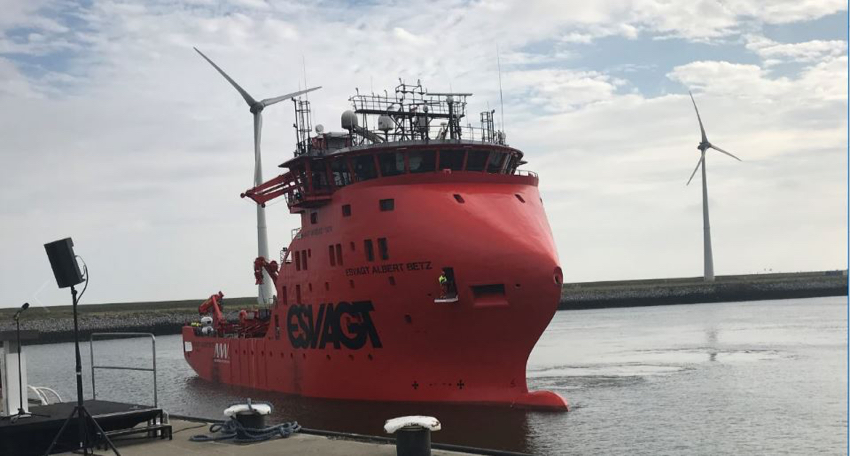Offshore service provider Esvagt has delivered the Service Operation Vessel Esvagt Albert Betz to MHI Vestas. The purpose-built vessel will facilitate service operations for offshore wind farm Deutsche Bucht’s 33 V164-8.4 MW turbines.
Construction of the Deutsche Bucht Offshore Wind Farm, located over 100 kilometres from the German mainland in the German Exclusive Economic Zone, is almost complete. Following the handover, which took place on 4 September at Eemshaven, the Esvagt Albert Betz will be deployed to perform service operations at the site for the next fifteen years. MHI Vestas is responsible for the offshore windfarm’s upkeep for this period. The company is a joint venture between Vestas Wind Systems A/S and Mitsubishi Heavy Industries (MHI) and specialises in the design, manufacturing, installation and servicing of wind turbines.
SOV Esvagt Albert Betz
MHI Vestas and Esvagt jointly developed the Service Operation Vessel (SOV) specifically for the Deutsche Bucht turbines. In the past, the companies already collaborated on the Esvagt Mercator, which services the offshore wind farms Nobelwind and Belwind in Belgium. The new vessel is named after Albert Betz (1885-1968). He was a German wind energy pioneer who, among other things, formulated theoretical formulas for the maximum utilisation of wind energy from a wind turbine.
The 58-metre SOV is a Havyard 831 design, resembling the Esvagt Mercator. It contains a fixed walk-to-work gangway system combined with a large, stepless passenger and freight elevator, which gives full access from the ship’s stores to the upper deck and on to the wind turbines. An integrated crane solution is to ensure an optimal flow of spare parts. The Esvagt Albert Betz is equipped with increased capacity on thrusters and generators compared to the Esvagt Mercator. The ship can accommodate 42 wind turbine engineers and crew in 36 cabins. The vessel was built at the Zamakona shipyard in Bilbao.
Deutsche Bucht is Canada-based power producer Northland Power’s third offshore wind farm. It will supply enough renewable energy to meet the needs of approximately 328,000 households per year.








